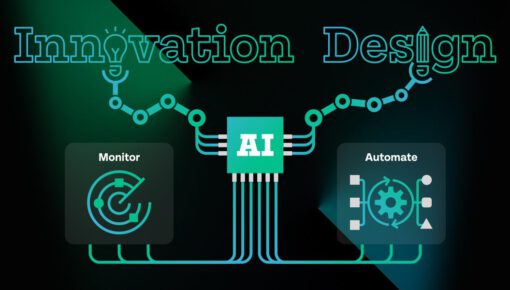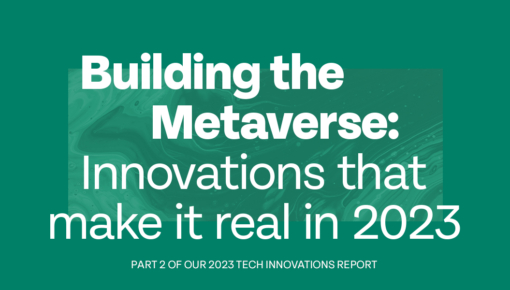Data, AI, and the Future of Innovation
Data and AI are transforming the future of work. They are critical inputs for decision-making and, in some cases, are replacing human labour entirely. However, research shows that with today’s AI technology, fewer than 5% of occupations can be fully automated. The real question is: how will AI influence innovation and design services in the near future?
AI-enabled products are already pervasive in finance, logistics, HR, digital content, and life sciences—supporting everything from fraud detection and risk advisory to early cancer screening and genomic-based protein prediction. These applications leverage AI’s strengths: accelerating repetitive analytical processes by identifying correlations in vast datasets, detecting patterns, and flagging anomalies—whether that’s cancer genes, unusual transactions, or hazards that prompt a self-driving car to brake.
This kind of skill assistance has already proven useful to innovation, design, and engineering teams, who use AI-enabled applications to automate, accelerate, and enhance consumer research, design processes, and marketing execution. AI also streamlines workflows. But where do the bigger opportunities for data and AI lie across the wider end-to-end innovation and design process?
Creativity thrives on making unexpected connections and bold statements, often based on little more than intuition. How could AI-enabled data possibly replace such an innate, invisible process? The question, then, is not about replacement but enhancement. How can AI bring innovation and design professionals the same value it delivers to medicine developers, fraud specialists, or self-driving car engineers?
The answer lies in six principles: Monitor, Automate, Customize, Synthesize, Reproduce, and Create. Using these, AI-enabled data can add value to the creative process and enhance the user experience of existing products.
Principle 1 – Monitor
AI can detect specific combinations of sensor states in large datasets. This is widely used in self-driving cars but can also support complex design thinking processes—for example, excluding biased input from designers or recognizing unique consumer behaviour in context.
Principle 2 – Automate
Automating tasks based on sensor data and predefined actions is already possible with today’s AI assistants. In creative work, many steps of the design process can be automated to save time and enhance existing tools.
Principle 3 – Customize
Tailoring design outputs to match target audiences is essential in today’s crowded media landscape. AI applications can help brands customize advertising, experiences, and products for different audiences.
Principle 4 – Synthesize
AI can combine unrelated data sources and synthesize new data types to reveal deep insights into consumer behaviour. Understanding behaviour and context is key to developing relevant brand and product propositions. This principle applies both to innovation and to improving existing products and services—much like Netflix uses AI-enabled data to recommend content.
Principle 5 – Reproduce
AI can be trained to understand existing creative expressions (art, music, literature) and recreate them within the same domain. IBM’s Watson helped generate a new Gaudí-style painting. The Next Rembrandt was created using multiple datasets. Music producers are already leveraging AI-generated melodies. While not yet flawless, AI can reproduce creative skills and crafts to a significant degree.
Principle 6 – Create
AI can also generate entirely new products. For example, NotCo uses AI to create novel dairy alternatives. The sheer scale of available data will continue to fuel innovation pipelines for global FMCG companies.
With data and AI becoming mainstream, it is increasingly feasible to integrate data science at multiple stages of innovation and design, enabling more relevant products and services. They are reshaping the balance between qualitative consumer research, quantitative product research, and prototyping required for successful innovation.
Designers remain essential in guiding these powerful AI tools toward high-quality, ethical solutions. As Dasha Simons, an AI business transformation consultant at IBM, said in our interview:
“Design needs data as a powerful resource, but the same is true the other way around, with tech-savvy companies needing design to implement qualitative aspects.”
Qindle will continue to research and explore the opportunities AI brings to creativity and design, article written in 2019.

How will data and AI change innovation and design? – Part II
Monitor and Automate are the first two principles of Qindle’s data-driven design vision. How will data and AI change innovation and design?

